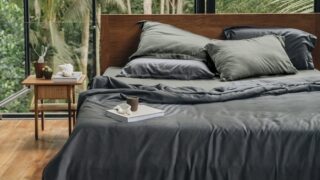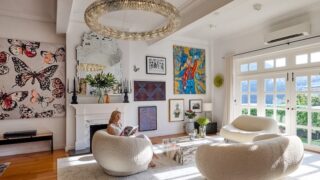Chatting to Maria Bizri, founder of Southside private dining venue Pomegranate Kitchen, it becomes clear that her family has achieved a seemingly impossible feat in this most cut-throat of real estate markets. Not only did they identify the perfect 3,500-square-foot family home in beautiful Repulse Bay, but, unusually for Hong Kong, they have remained there for seven years – and counting.
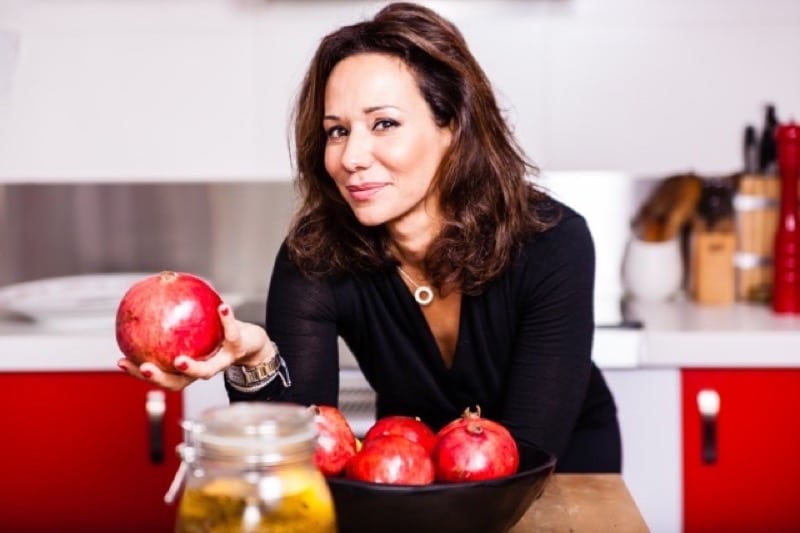
Maria explains: “We moved to Hong Kong from Jakarta in 2010 with my husband’s work and we’ve been living in the same house on Headland Road ever since, in a building built in the late 40s to early 50s. It has a mid-century modern feel, and is laid out beautifully, with all the rooms overlooking an 800-square-foot covered terrace, which means that we can use it year-round.” Maria particularly loves that all the rooms are interconnected, and that they “flow perfectly”.
The family – Maria, husband Rehan, daughters Leia and Maya, and family dogs Caspar (a Bichon Frise) and Ginger (an Australian Cavoodle) – all appreciate the rare outdoor space. “It’s built with entertaining in mind, and it lends itself to parties. We host lots of brunches, barbecues, long lunches and dinners, a few of which turn into impromptu dance parties!”
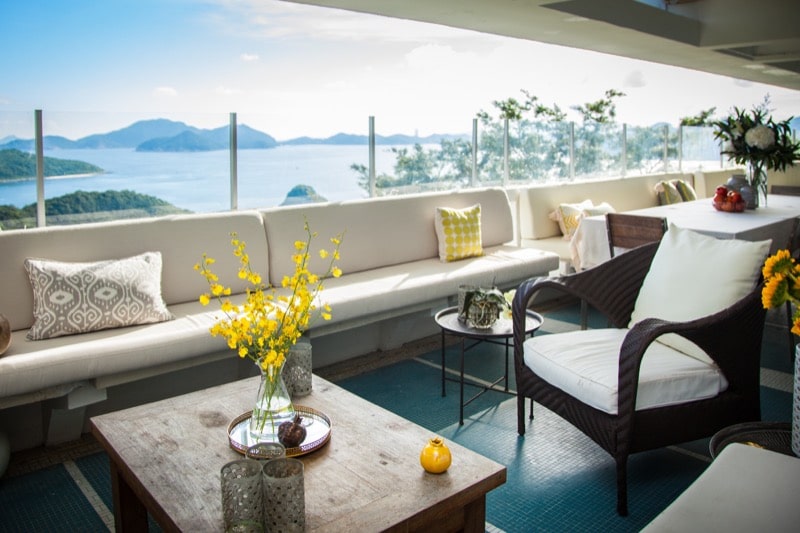
With its built-in seating, the terrace offers breathtaking views of the sea and stunning sunsets. Maria says, “The 50s were a great time for design, and the architect obviously had the same image that I did when I first stepped out on the balcony: women in long, flowing dresses, holding martinis with incredibly coiffed hair and painted nails!”
It’s clear that hosting and entertaining are among the Pomegranate Kitchen founder’s ] main motivators, both in her career and also at home. “I’m not sure I can call it a ‘style’,” she says, when asked about her approach to décor, “but the one thing I always consider when I move into a new home is making sure it’s comfortable, warm and welcoming. I hope that’s what our guests feel when they visit!”
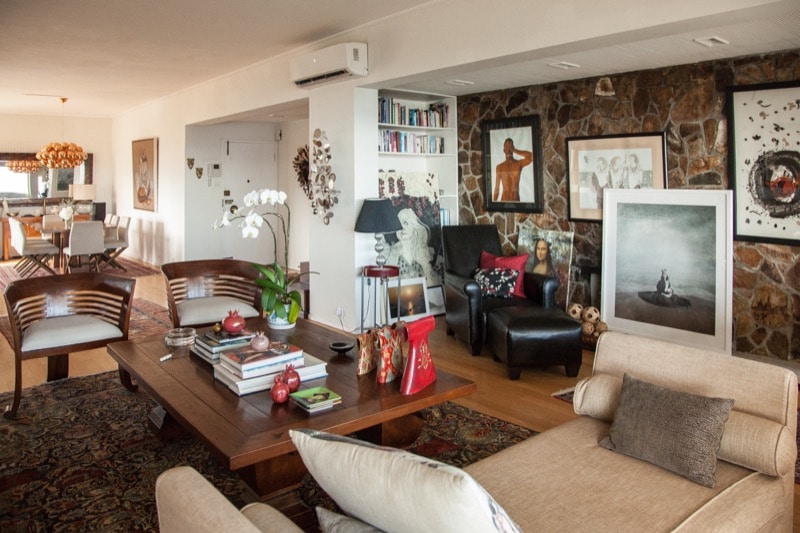
Meaningful memories
With an eclectic mix of home furnishings and striking art pieces, Maria has certainly achieved her goal of creating a cosy, comfortable haven. “Our home is filled with things we picked up along our travels. Some are sentimental and some are just things we like.” Maria freely admits that many items have strong emotional attachments, and when asked how she sourced the key pieces in her home, explains the strong values that continue to guide her. “As a young couple, my husband and I bought what we could afford. Our first home had a dining table top with no base, as we couldn’t afford the one that we wanted! Throughout our life, we’ve retained that need to fall in love with things.” At this, she ponders: “I call them ‘things’, but maybe I shouldn’t; we live with the vision, beliefs, sweat and tears of other people. Perhaps we tend to acquire the hard work of those who speak our language.”
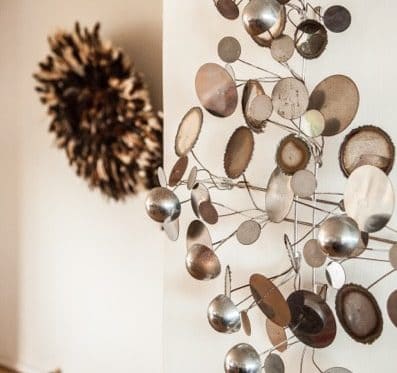
Nowhere is this connection more evident than in Maria’s most treasured collection, her father’s enamelwork pieces. “He’s not a working artist; it’s a passion that has allowed him to express himself and live more comfortably with himself. I love how he inscribes them with the often-controversial verses of great poets. You have to look closely to see the inscriptions, which are playful and poignant at the same time. They’re perfect!”
That said, Maria insists that her pieces are scattered around the house in no particular order – “there’s no favouritism where I stand!” – which means that her father’s work shares prominence with a striking painting by Australian artist Todd Hunter, along with other eye-catching art, a cosy reading nook, and an extensive collection of interesting curios throughout the home. She also has a soft spot for her three favourite Persian carpets, “partly because they are old and have managed to age gracefully, and partly because the workmanship means that I have to respect them.”

Work-life balance
As her daughters have grown older, Maria has found that this spacious home has easily adapted to the family’s changing needs, helped in no small part by that most valuable of Hong Kong commodities: space. “As it’s an old apartment, it was built with entertaining and family living in mind. We have two large storage spaces – a pantry and a back storeroom – which I know is very rare in Hong Kong!” And while she acknowledges that her daughters may eventually require the workspace currently given over to the guest bedroom, Maria herself no longer uses the family home as an extension of Pomegranate Kitchen. “I did work from home when I first started Pomegranate Kitchen,” she says, “but we had to move out after about a year as we needed more space; plus, my husband and girls were fed up with seeing food they couldn’t eat!”
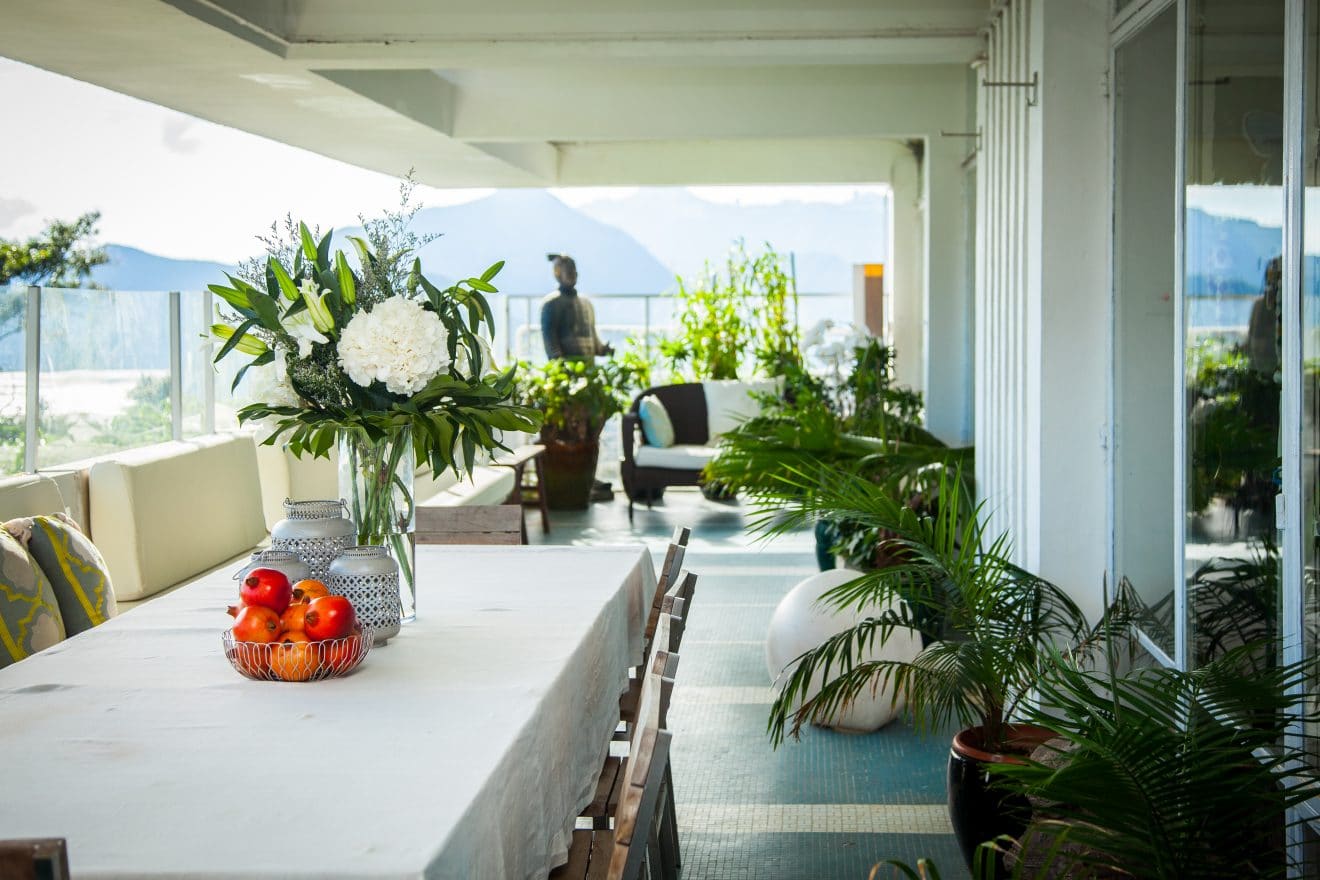
When asked for her recommendations of where to shop, Maria once again stresses her emotional connection with the pieces that inhabit her home. “I’m an impulsive buyer and not really a ‘shopper’. The only recommendation I can give is that if you see a piece and it speaks to you on any level, buy it. It may one day be a reminder of a different you, but that’s also okay.”
This article first appeared in the Apr/May edition of Expat Living magazine. Subscribe now so you never miss an issue!
See inside more real houses and apartments in our Homes section!
Mastering the art of Hong Kong living in Happy Valley
‘It’s weird to think I arrived nearly six years’ ago with one suitcase’



